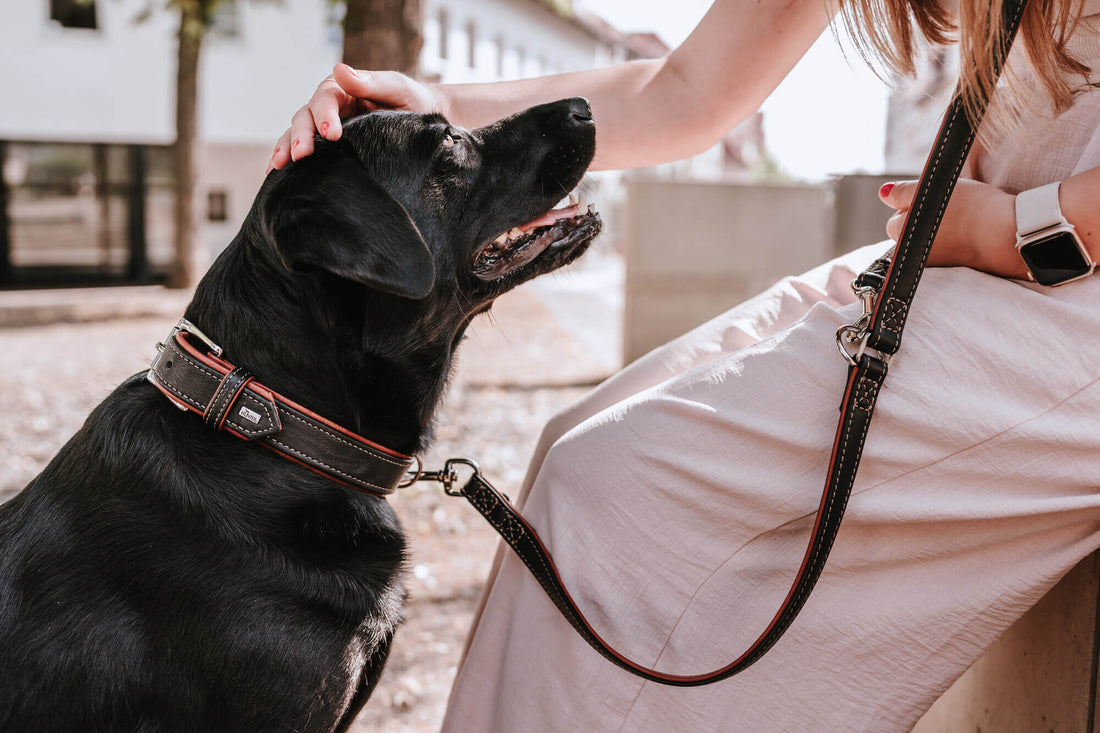
How to Properly Measure Your Dog for a Collar: The Key to a Comfortable Fit
Share
Choosing the right collar for your dog goes beyond aesthetics; it's essential for their safety and comfort. Many responsible pet owners recognize that a well-fitted collar can prevent injuries and provide better control during walks. Understanding how to measure a dog for a collar is crucial for those who wish to prioritize their furry friend's health and happiness.
This detailed guide will take you through the steps to accurately measure your dog for a collar, explore the various types of collars available, and emphasize why achieving the correct fit is vital for your dog's welfare. By grasping the intricacies of collar sizing, you'll be empowered to make choices that keep your pet secure and comfortable.

Why Accurate Measurement is Important
A poorly fitting collar can lead to serious discomfort or injury for your dog. A collar that is too tight can restrict breathing or cause skin irritation, while a collar that is too loose may slip off, raising the risk of your dog escaping or getting lost. Taking proper measurements ensures that the collar is snug yet comfortable, allowing for the necessary control without compromising your dog's health.
To steer clear of common mistakes, it's vital to measure your dog accurately. For more on preventing collar-related injuries, consider checking this PetMD article.
Step-by-Step Guide to Measuring Your Dog's Neck
Gather the Right Tools
Before you begin, make sure you have the proper tools. A flexible measuring tape works best, but if you don't have one handy, you can use a piece of string and a ruler.
Measure the Neck Circumference
Wrap the measuring tape around the base of your dog's neck, where their collar will sit naturally. Ensure the tape is snug but not overly tight; you should be able to comfortably fit two fingers between the tape and your dog's neck. This will give you the most accurate collar size.
Add Extra Length
After measuring the neck circumference, add two inches for small to medium-sized dogs and three inches for larger breeds. This additional length accommodates movement and growth, ensuring the collar remains comfortable.
Selecting the Right Type of Collar
With the correct measurements in hand, it's time to choose the appropriate collar type for your dog. Different collars serve distinct purposes, and knowing these can help you make an educated selection.
Flat Collars
Flat collars are the most common option, suitable for everyday use. They typically feature a buckle or quick-release clasp and are great for holding ID tags. This type of collar works best for dogs that do not pull on their leashes.
Martingale Collars
Martingale collars are crafted for dogs with narrow heads, like Greyhounds, to prevent escape. They tighten slightly when the dog pulls, offering control without causing choking. For further insights on collar types and measuring advice, explore this beginner's guide.
Head Collars
Head collars, such as the Gentle Leader, fit around the dog's muzzle and work wonders for dogs that pull. They allow for guidance and control without straining the neck.
Avoiding Common Mistakes
Even with good intentions, pet owners can slip up when selecting and fitting collars. Here are some common pitfalls:
Neglecting Material Quality
Select collars made from durable materials that won't irritate your dog's skin. Steer clear of cheap, poorly crafted options that may break or cause discomfort.
Forgetting About Your Dog's Activity Level
Active dogs might require a sturdier collar, such as a padded or waterproof one, to endure wear and tear. For more information on dog training tips, check out this jumping tips.
If you'd like to learn more about common mistakes and how to avoid them, you might find this Martha Stewart article insightful.

FAQ
How snug should my dog's collar be?
Your dog's collar should fit snugly but not restrictively. You should be able to fit two fingers between the collar and your dog's neck comfortably.
How frequently should I measure my dog for a new collar?
It's advisable to measure your dog every six months, especially during their growth phase. For adult dogs, an annual measurement may suffice.
Can I use the same collar for various activities?
While some collars are versatile, it's generally best to have specific collars for different activities, such as a standard collar for daily wear and a head collar or harness for training and walks.
This article contains affiliate links. We may earn a commission at no extra cost to you.
